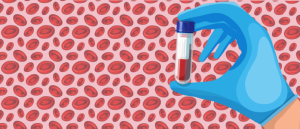
BioTechniques News
Beatrice Bowlby

A standardized procedure to measure the mechanical properties of cells with atomic force microscopy (AFM) could lead to a novel method for early cancer diagnosis.
Changes in the mechanical properties of cells are among the earliest signs of developing cancer and occur sooner than optical changes. An international team of researchers led by Allesandro Podestà (University of Milan, Italy), Manfred Radmacher (University of Bremen, Germany) and Małgorzata Lekka (Polish Academy of Science, Kraków, Poland) have developed a standardized procedure to use AFM to measure changes in mechanical properties, which could be used in cancer diagnostics in the future.
Lekka has been using AFM to study cancer cells for many years and in 1999 showed that cancer cells have different mechanical properties to healthy cells, finding that cancer cells are softer. Cancer cells are characterized by an increased deformability of the cytoskeleton, which allows them to pass through the blood and lymphatic systems, resulting in metastatic growth. Since then, it’s been found that breast, bowel, bladder and prostate cancer cells become softer in the early stages of tumor development, whilst leukemia cells actually become stiffer.
Changes in the mechanical properties of cells could be used to diagnose cancer, possibly using AFM. AFM applies a precisely defined force to the substrate being analyzed using a probe. The mechanical response of the substrate is used to determine the elasticity coefficient (Young’s modulus), which can be used to draw conclusions about the elasticity of structures at the cell membrane but also around the cell nucleus.
 Detecting noncoding RNA sequences improves cancer diagnostics
Detecting noncoding RNA sequences improves cancer diagnostics
Profiling noncoding repetitive RNA sequences improves the sensitivity of liquid biopsy diagnostic tests for early stage cancers.
The main limiting factor of using AFM for this application has been due to a lack of a suitable and reproducible measurement procedure, explained Lekka. “To put it bluntly, the results obtained in different laboratories, on apparatus from different manufacturers, on differently prepared samples, were not sufficiently reproducible to be used as the basis for responsible decisions on the direction of further medical action.”
To address this, the researchers developed a procedure that ensures the Young’s modulus obtained stays the same for the same cells, regardless of where the measurement is performed, or the manufacturer of the apparatus used. The protocol includes sample preparation, calibration of the instruments and how to analyze the results. It is also important to consider the impact of the stiff substrate on which the tumor cells are deposited for analysis.
This procedure could lead to more rapid tests for cancer diagnosis, which Lekka emphasized would be rapid in two ways. “On the one hand, we can try to diagnose cancer at the initial stage of development at which other tests usually do not yet show significant cellular changes. On the other hand, it is simply that the measurement procedure itself is not very burdensome – it does not require large amounts of biological material or take a lot of time.”
Combining this standardized procedure with automatic data recording and analysis could lead to a cancer diagnostic test that provides results in a matter of days. For this to become a reality, the researchers will focus on reducing the number of false-positive results and test the procedure in studies of selected disease entities, followed by clinical trials.
The post AFM could be used for early cancer diagnosis appeared first on BioTechniques.
Powered by WPeMatico
